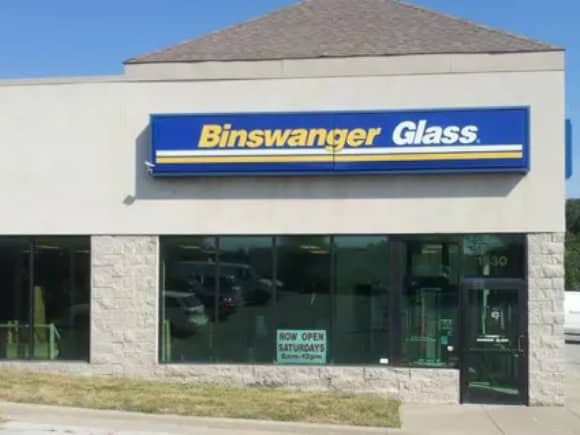Systems to help the driver in the driving process. When designed with a safe human-machine interface, they should increase car safety and more generally road safety.
Acrylic
A thermoplastic that resists weather and shattering, and has optical clarity.
Adhesive
Substance used to adhere one material to another.
Anchor
Bracket made of aluminum or steel and used to fasten aluminum frames to an adjoining structure.
Annealing
A process of slowly cooling hot glass to relieve internal stresses and strengthen it.
Anti-Reflective Glass
A dielectric, thin-film coating applied to an optical surface in order to reduce the optical reflectivity in a certain wavelength range.
Ariss
The small, angled edge of the glass, which can be ground or polished.
Auto Clave
A machine that employs high-pressure and heat. In the glass industry, it is used to create a laminated glass product by producing a bond between glass and a PVB, urethane or other sheet interlayers.
Awning window
Window that is hinged at the top and swings out.
Backlite
Back window of a vehicle.
Back-Painted
Glass that has been painted a flat color on one side of the surface.
Ballistic glass
(Also known as bullet-proof glass, transparent armor, or bullet-resistant glass) is a type of strong but optically transparent material that is particularly resistant to being penetrated when struck. Like any material, however, it is not completely impenetrable.
Beveling
Edge finishing flat glass with a beveled angle.
Boom Trucks
A truck specialized to transport glass, up to jumbo sizes.
Bulletproof glass
(Also known as ballistic glass, transparent armor, or bullet-resistant glass) is a type of strong but optically transparent material that is particularly resistant to being penetrated when struck. Like any material, however, it is not completely impenetrable.
Cap
Outside finish of a curtain wall frame. Also called a “snap cover”.
Ceramic Frit
A ceramic composition fused to glass through tempering.
Clear Glass
Standard transparent glass.
Clerestory
A high section of wall that contains windows above eye level. The purpose is to admit light, fresh air, or both.
CNC Cutting Line
A process used in the manufacturing sector that involves the use of computers to control the line of cutting and improve precision.
Cranes
Machinery used to lift and transport glass or other materials.
Curtain wall
Non-load-bearing wall constructed of aluminum and glass.
Cut Sizes
Glass cut to a specific length and width.
Cutting
The process of scoring glass with a tungsten carbide or other hard alloy wheel and breaking it along the score.
Dolly
Wheeled cart used to transport glass or other materials.
Drilling
Cut notches, make holes or shapes in glass, usually done with a CNC computer to automate the process.
Edge Polishing
To machine the edge of the glass to produce a high polish with a flat edge and two arisses.
Fabrication
Manufacturing process in which an item is made (fabricated) from raw or semi-finished materials instead of being assembled from scratch.
Edge work
Process of sanding or grinding the cut edge of a glass to any of the following finishes: arrised, bevelled, furniture, polished, mitred, and ground.
Electronically altered glass
Specialty glass that can be electronically obscured.
Etching
Creating designs and patterns on glass surfaces using acids.
Fire Protection Rating
The duration for which a passive fire protection system can withstand a standard fire resistance test, such as 60 minutes, 90 minutes, etc.
Fire Resistance
A material that prevents or hinders the passage of excessive heat, hot gases or flames under conditions of use.
Flashing
Thin sheet of metal, formed to a specific shape.
Flat Glass
A general term to describe float glass or sheet glass.
Flooring
Slip resistant glass that has a rubber-like patterned texture on one side.
Gasket
Preformed rubber or vinyl substance used in the glazing industry.
Glass
A hard, brittle substance, typically transparent or translucent, made by fusing sand with soda, lime, and sometimes other ingredients and cooling rapidly.
Glass Entrances
Entrance ways of any size for any building.
Glass Washing Machines
Used to clean glass before tempering or final inspection.
Glaze
Install glass.
Hardware
Hardware used for hinges, rails, shower enclosures or doors to attach or allow access.
Heat Absorbing
Glass that can absorb heat or solar energy.
Heat Resisting
Glass that is heat-treated or leached to remove alkali so that it withstands high heat and sudden cooling without shattering.
Heat Strengthened
Glass that has been processed through a tempering furnace to alter its strength characteristics; usually flat or bent glass that has been heat-treated to have a surface compression between 3,500 and 7,500 psi (24 to 52 mpa), typically 2X stronger than annealed glass.
Insulating glass (IG)
More commonly known as double glazing (or double-pane, and increasingly triple glazing/pane), consists of two or three glass window panes separated by a vacuum or gas filled space to reduce heat transfer across a part of the building envelope.
Jumbo Glass
Standard 130” X 240” sheet.
Laminated Glass
A type of safety glass that holds together when shattered; pieces are held in place by an interlayer, typically of polyvinyl butyral (PVB) or Ethylene-vinyl acetate (EVA), between two or more layers of glass.
Lite
Single piece of glass.
Low-E Glass
A type of energy-efficient glass designed to prevent heat escaping through windows to the outdoors.
Low-Iron Glass
Glass with a low iron content that has a higher visible transmittance and thus a greater ability to collect solar energy, offered in float or satin etch glass.
Magnetic Glass
Glass with a steel sheet attached to the back of a flat glass surface making it magnetic.
Mirrored Glass
Glass that has a reflective surface on one side.
Miter
A joint made between two pieces of glass at an angle of 90°, such that the line of junction bisects this angle.
Monolithic
Another name for annealed glass.
Molding
Metal trim that covers windshield clips.
Mullion
A slender vertical member that forms a division between units of a window, door, or screen or is used decoratively.
Muntin
A strip separating panes of glass in a sash.
One-way mirror
Also called two-way mirror (or two-way glass) and semi-transparent mirror, is a reciprocal mirror that is partially reflective and partially transparent. The perception of one-way transmission is achieved when one side of the mirror is brightly lit and the other side is dark. This allows viewing from the darkened side but not vice versa.
Patterned Glass
A type of glass used to control light, obscure visual detail for privacy, or to provide decorative effects.
Plexi-glass
A solid transparent plastic made of polymethyl methacrylate (the same material as perspex or Lucite).
Polishing
Grinding each edge of the glass to 45 degrees.
Preglazed
Window frame that has the glass installed in it before installation of the frame takes place.
Pressure plate
Screw-applied stop on curtain wall.
Reflective Glass
Glass that has been treated with a metallic coating that allows it to reflect heat.
Sandblasting
Carving glass surfaces using sandblasting equipment.
Safety Glass
Glass with additional safety features that make it less likely to break, or less likely to pose a threat when broken. Common designs include toughened glass (also known as tempered glass), laminated glass, wire mesh glass (also known as wired glass) and engraved glass.
Sash
Frame holding the glass in a window and usually made to slide up and down in the grooves of a window aperture.
Satin Etch
Glass that has been chemically treated to give it a satin or frosted finish, on one or two sides.
Score
Make a split in the surface of the glass which encourages the glass to break along the score.
Sealant
Substance applied to a surface to make it impervious or resistant to water, dirt, stains, etc.
Seam
To grind or sand the sharp edges of a piece of glass, usually with an abrasive belt, wet or dry.
Setting block
Block made of rubber, neoprene, EPDM, or silicone and used to position and protect glass in a frame.
Shear block
Bracket made of aluminum or steel and used to fasten horizontal frame members to vertical frame members.
Shower Enclosures
Glass walls for any type of shower to create privacy or openness.
Silkscreen
Transferring an image to the glass by pressing ink through a screen and then processing it through a horizontal tempering furnace.
Skylite
Any overhead glazing.
Snap cover
Outside finish of a curtain wall frame. Also called a “cap”.
Spandrel
Non-vision window.
Stop
Removable piece of material that holds glass in place (metal, wood, rubber).
Storefront
Glass and aluminum enclosure on the main part of a building, complete with doors.
Switchable Glass
Glass or glazing whose light transmission properties are altered when voltage, light or heat is applied.
Tempered Glass
A process of controlled thermal or chemical treatments that put outer surfaces into compression and inner surfaces into tension and makes the glass four to five times stronger and safer than annealed or untreated glass. As a result, tempered glass is less likely to experience a thermal break and, if it does break, it breaks into many small pieces, thereby reducing the chance of injury.
Tinted Glass
Coloring glass during the manufacturing process to reduce the transmission of light and solar energy.
Two-way mirror
Also called one-way mirror (or two-way glass) and semi-transparent mirror, is a reciprocal mirror that is partially reflective and partially transparent. The perception of one-way transmission is achieved when one side of the mirror is brightly lit and the other side is dark. This allows viewing from the darkened side but not vice versa.
Vacuum Cups
Suction cups used with cranes to lift glass by producing an airtight suction.
Wall Systems
A set of glass shelves often with cabinets or bureaus that can be variously arranged along a wall.

